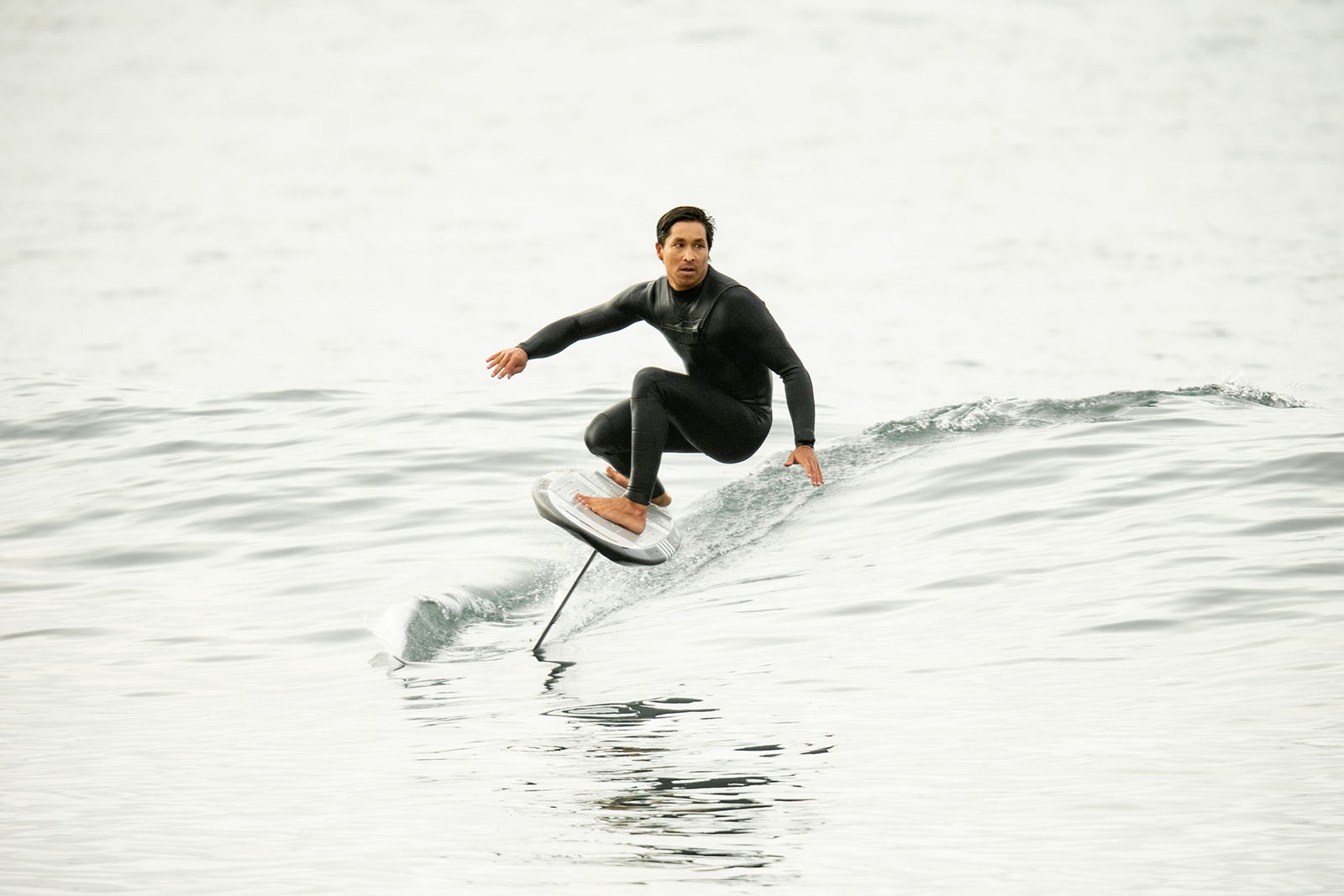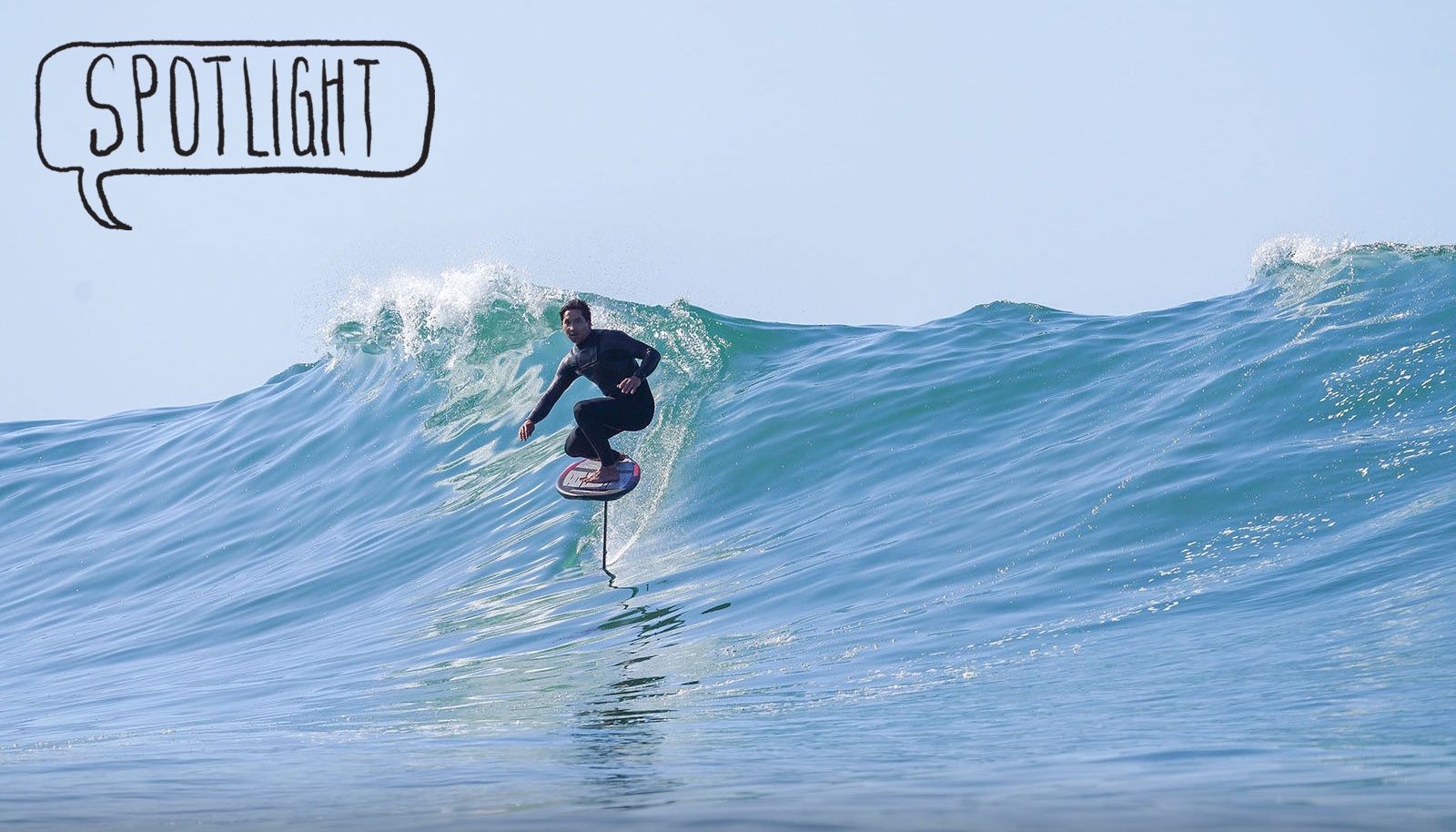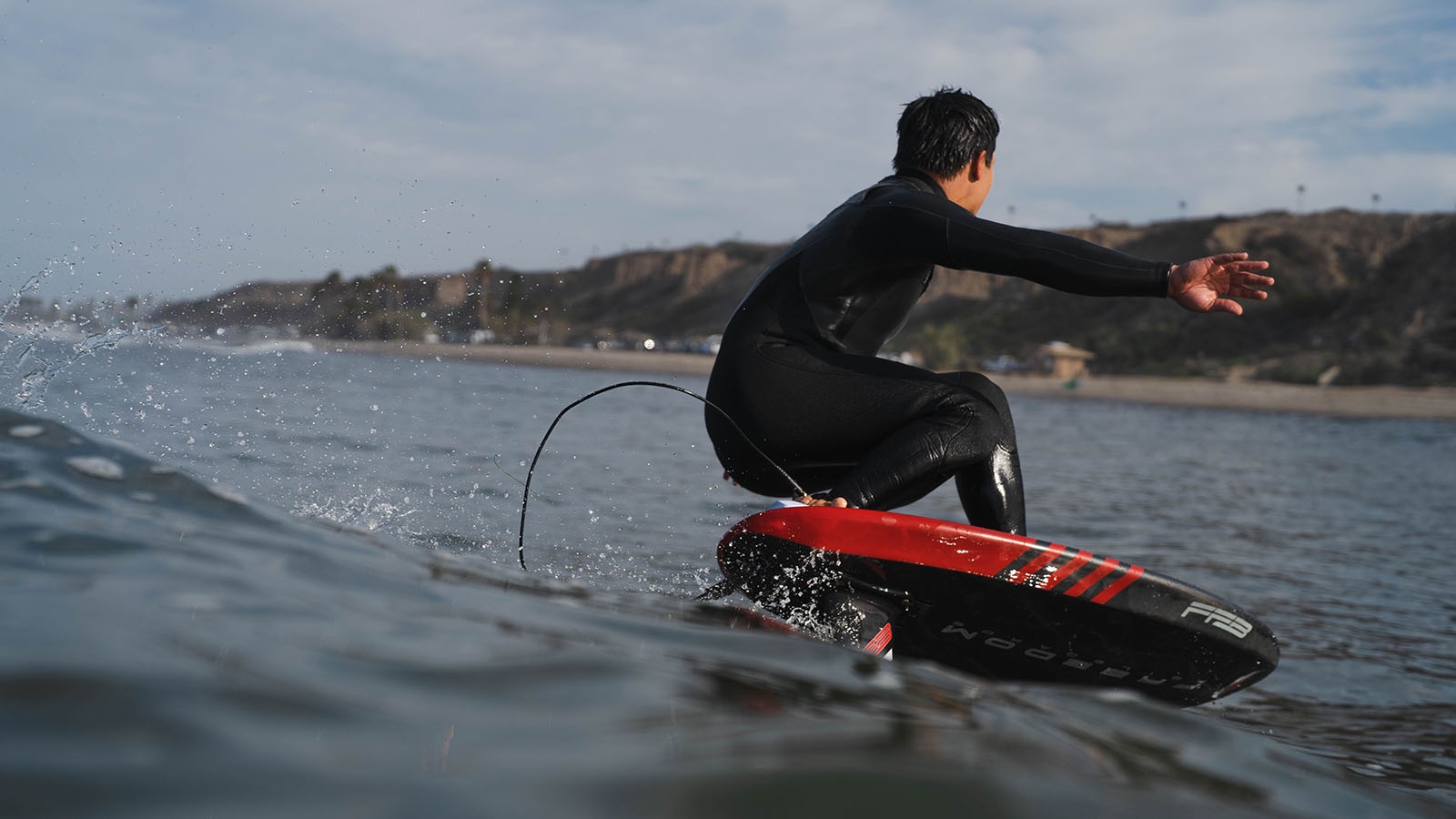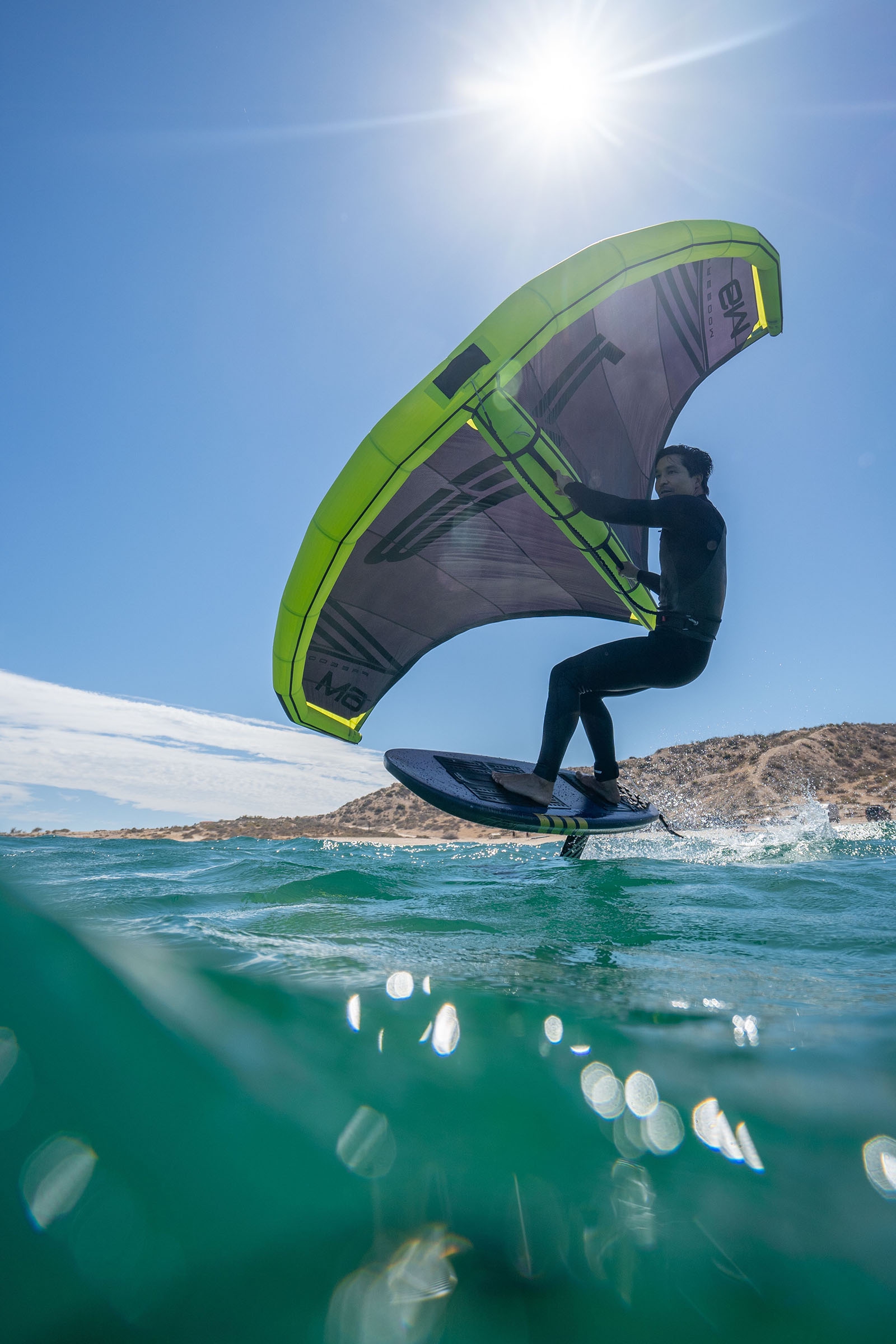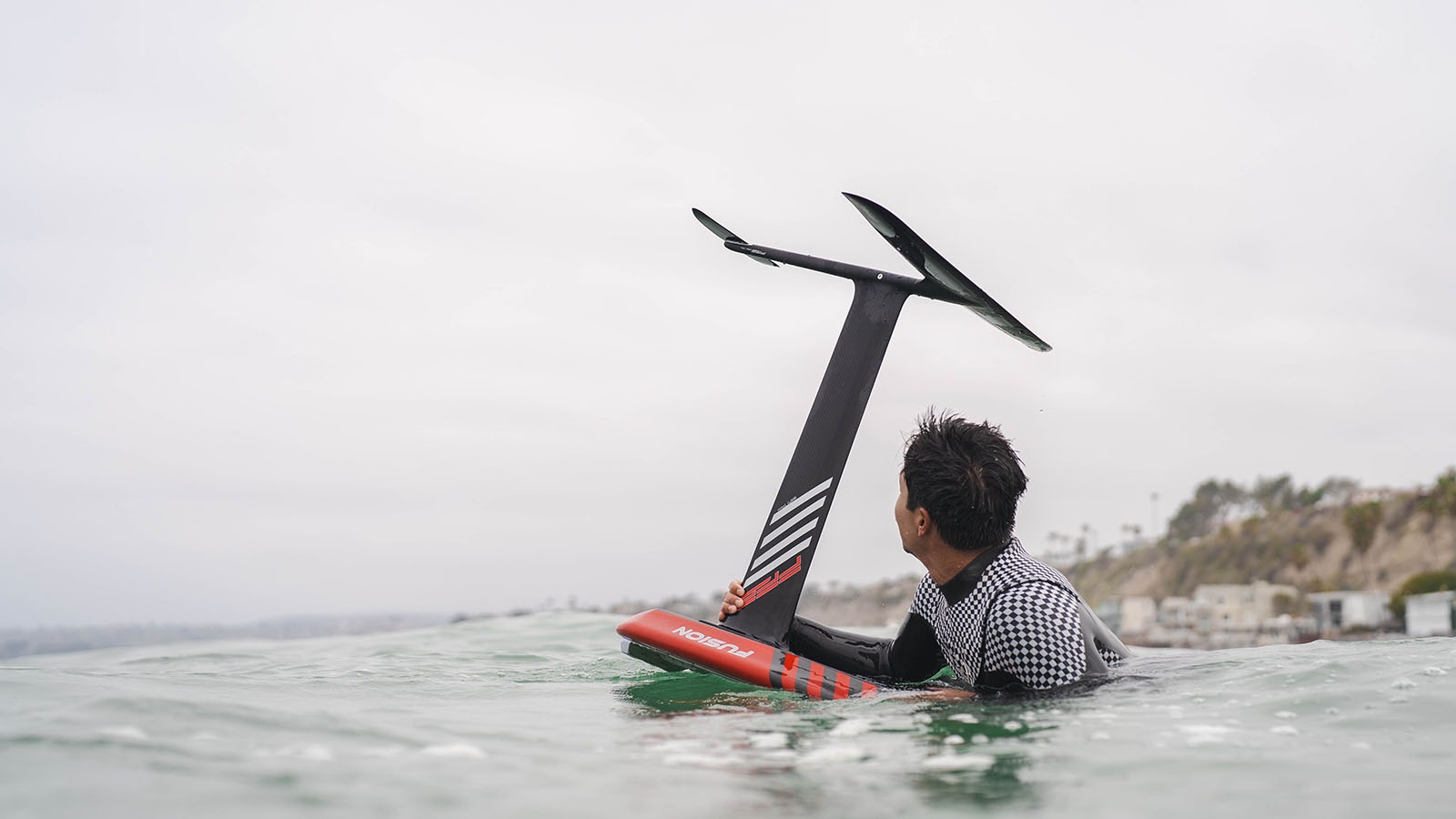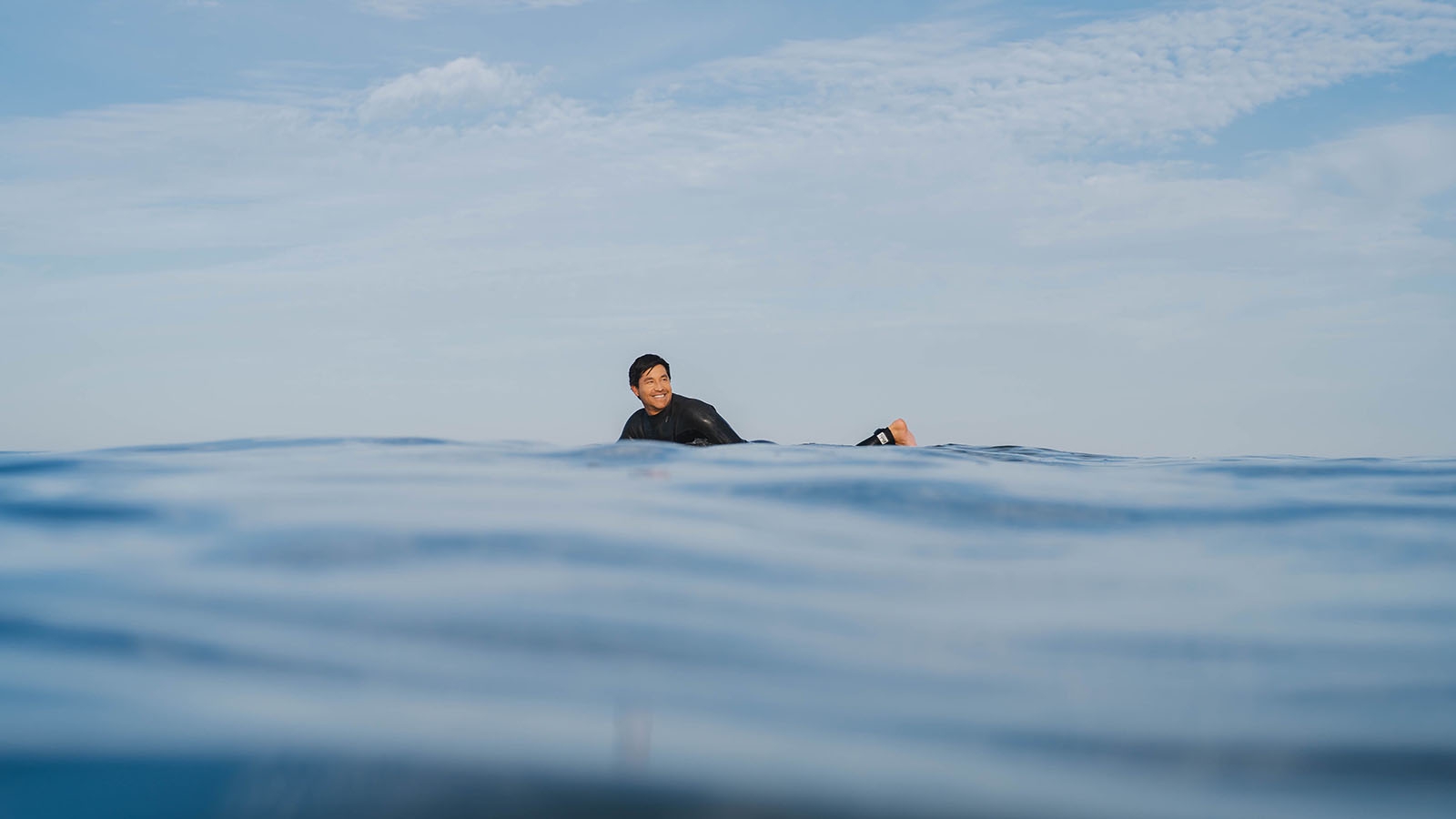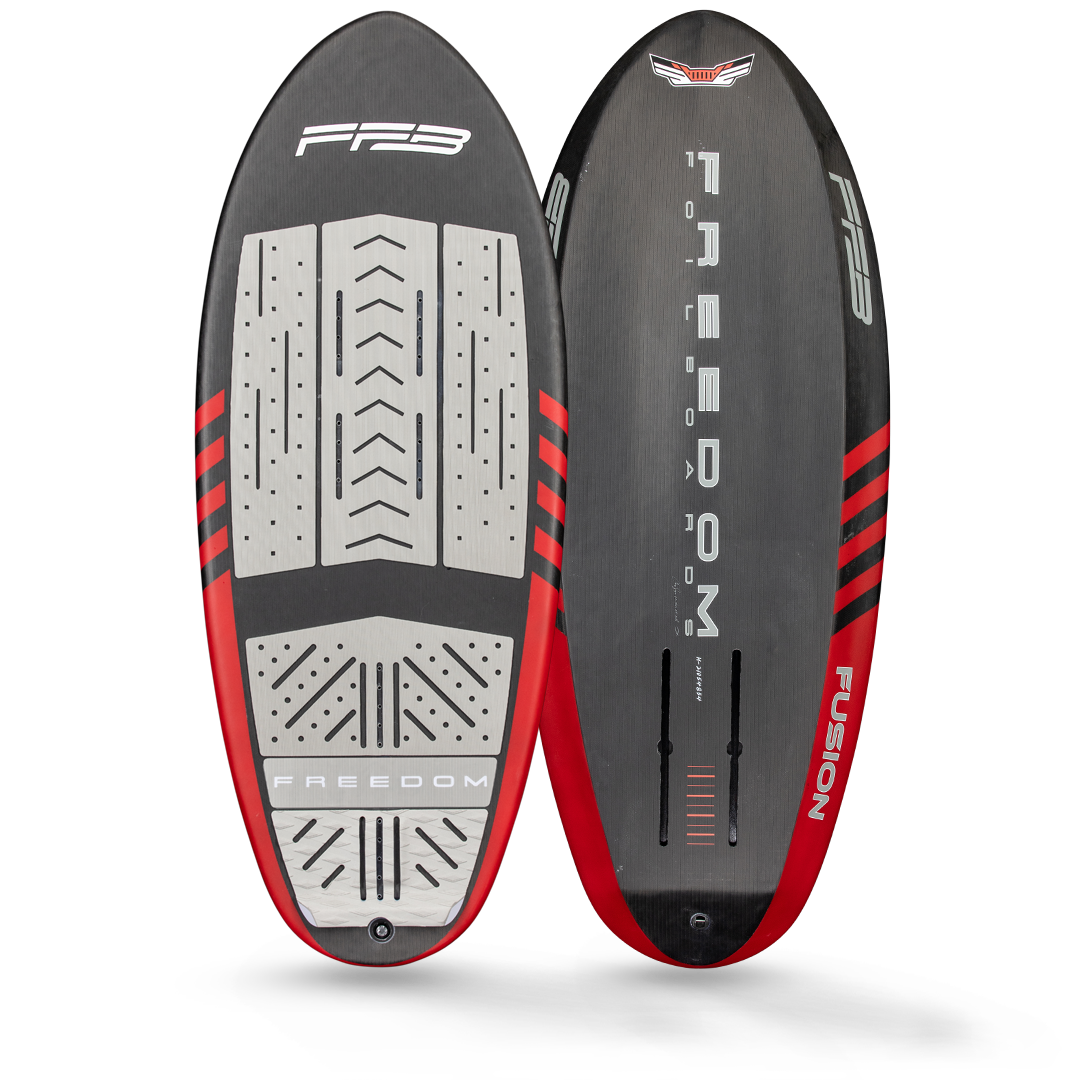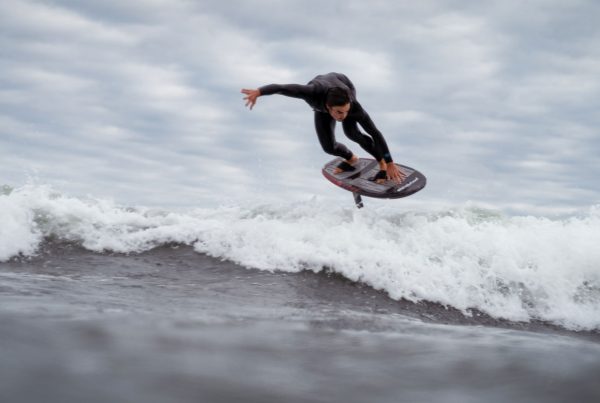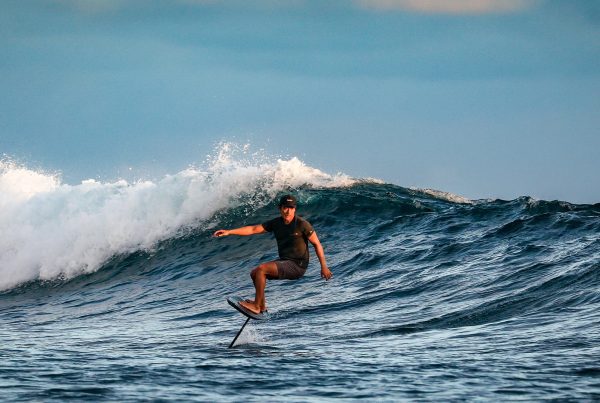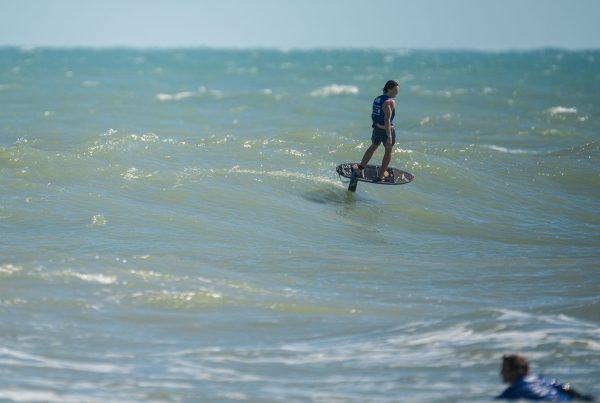JASON’S Q&A WITH CHRIS SAYER
Q: Jason, it wouldn’t be a far stretch to say you have one of the cleanest foiling styles out there. Can you walk us through your approach to how you draw your lines when flying somewhere like our home break at San O?
A: I attribute my approach to foiling in the way that I always wanted to surf. At a young age learning to ride waves, you just did what came natural–as far as body positioning or technique goes and I’m sure I picked up a few bad habits along the way. When I started foiling a few years back, I felt like I could start fresh–a full redesign. I wanted to keep my upper body movement to a minimal and lock in turns, back knee tucked and with a low center of gravity. My ideal ride would be flying at the top speed with long drawn out carves without ever touching down. If I wanted to hit the lip or do airs, I’d rather grab my shortboard.
Q: The trend in board designs for quite some time now has been longer, narrower and thinner. You and I are currently working on a pro model design and it seems like you have not accepted this trend in its extreme form for your boards. What’s your ideal board specs for surf foiling and can you give us a little bit of the why behind your board designs?
A: That’s a tough one. My dimensions have always been in the 4’3 x 19 x 3 and low 30Ls. I think those dimensions end up being in the middle of the spectrum. Not too long or short and not too wide or narrow–it’s the Goldilocks of dimensions. Since we’re mostly riding in the surf, I like to have a rail that was really easy to hold onto mostly for duckdiving and getting through the surf. I also liked the idea of having a beak nose design–an element from 1970s and 80s surf design which allowed more volume into the nose of the board. I’m also looking forward to working with the Freedom team to R&D some alternative constructions to get the weight down and implement more sustainable materials.
Q: You and I have had discussions about the realization that most people’s foiling is heavily influenced by their home break zones and the type of foiling that’s readily available there. If you could choose one place to call home other than San Clemente for the purpose of foiling, where would it be?
A: We’re very fortunate to call San Clemente home. We’ve got waves year round and beautiful weather conditions. However, since I was introduced to some of the wind sports, I’m now totally intrigued with downwinding and winging. We might get enough wind here once or twice a month if we’re lucky, so often times we have to get in the car or hop on a flight to chase those conditions. Given my newfound passion for the wind sports, I’ve kept my eye on real estate prices up in Hood River. The idea of being up there for a few months of the year sounds like a dream. I really enjoyed the short amount of time we got to spend up there last year. Everybody was super friendly, fit and welcoming. There’s definitely something special about that place.
Q: I have been super grateful for your assistance and feedback in the design process of our new Freedom Foil! I know our learning curve has really taken off as we have dove together into foil sections and overall foil design. We are currently working on a Jason Miller signature stabilizer to add to our growing lineup of wings. Can you give us a little insight into your stab wing design and what you’re looking to get out of it performance wise?
A: I think it breaks down into three categories. One is the ability for it to carve well–hold in at high speeds and tight radiuses. Secondly, it’s super efficient and has a ton of glide. Lastly, the aesthetics. We’re currently testing some unique materials that will visually set itself apart from everything else on the market. I’m also hoping it will easily attach to other fuselages.
Q: Most may not know that you have a very rich history in surfing and competitive surfing. It’s pretty cool to see the likes of John John and Nathan Florence so hyped on foiling and downwinding. What’s your impression on the general feel about foiling from the traditional surfers that are ripping but not foiling? Your’e pretty close friends with Kelly Slater, what does he think about foiling and has he ever tried it?
A: For me, I started foiling as a supplement to surfing. My hope at the time was to keep me active and get me excited to get in the water on all those average surf days. I think as I got older, the idea of groveling in waist high surf didn’t sound so appealing. However, the challenge and thrill of learning to foil took over and my surf days became less and less. When it’s overhead and tubing, I’ll still dust off the surfboard. Still, nothing beats an epic day full of barrels.
I think if the rest of the surf world got to experience how much joy foiling brings us, there just might be a few less surfers in the lineup. The biggest apprehension for most might be the fears of getting hurt. Or maybe it’s the fear of starting at the beginning and being a kook. I always hear from friends how they’re super interested in learning, but few make the effort to get out there.


